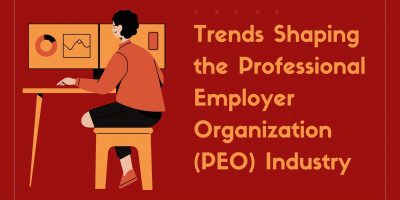
21 Best Employee Incentive Programs for Engagement & Performance
Ever wondered if the promise of rewards, bonuses, and promotions truly motivates employees, or if it’s just a corporate myth waiting to be debunked?

When most employees think of work benefits, things like health insurance or 401(k)s come to mind first.
However, as companies adapt to changes in the labor market, many have expanded their benefits packages beyond these core components to include additional benefits, such as pet insurance, to cater to diverse needs.
While pet insurance at first glance seems like a unique voluntary benefit only offered by a handful of tech start-ups, many driving factors are turning it mainstream.
By examining industry trends and insights gathered from Shortlister data, we provide a detailed view of the adoption of pet insurance and its implications for both employers and employees.
Shortlister data shows a dramatic increase in demand for pet insurance benefits.
Despite its relative newcomer status in the voluntary benefits space, pet insurance consistently ranks amongst the most searched options, highlighting its rapid rise in popularity.
With 66% of US households owning pets as of 2024, it’s no surprise that pet owners are increasingly seeking ways to protect their furry family members. Shortlister’s data backs this up, showing pet insurance nearly doubling the interest of childcare benefits in the past year alone.
These findings indicate that pet insurance is no longer a niche offering but is rapidly becoming a mainstream benefit, reflecting the growing importance of our animal companions.

With rising veterinary costs and the humanization of pets, understanding how these trends, along with other industry and societal shifts, shape the growing demand for pet insurance is more important than ever.
As isolation and loneliness crept in during the COVID-19 lockdowns, many found joy in having furry, scaly, and feathery companions.
This heartwarming trend led to a significant surge in pet adoption, with nearly one in five households – or 23 million – welcoming a new dog, cat, or other exotic pets into their homes, compared to pre-pandemic adoption rates.
From single parents to LGBTQ+ families to multigenerational households, “pandemic pets” are increasingly finding new homes.
Interestingly, younger generations, such as Gen Z and millennials, mostly view their pets as “starter children” or choose pet ownership over parenthood.
In fact, as much as 44% of millennials and 36% of Gen X have pets, and nearly 67% of those ages 18 to 26 chose to raise a dog instead of having a child, at least for now.
On the opposite end of the spectrum, Baby Boomers and older Gen X consider animal friends as their older children leave the nest.
This intergenerational love for pets extends beyond the home.
In today’s modern workplace, five generations collide, and meeting each employee’s diverse needs may prove challenging. However, one thing all workers with pets have in common is that they all value their animal companions highly.
As a matter of fact, almost all US pet owners (97%) consider their pets to be part of their family. This emotional bond, however, can come with its own set of concerns, particularly financial stress.

Skyrocketing costs related to pet care – such as vet visits, food, grooming, treats, and other expenses – are putting a strain on pet owners. Certain cat or dog breeds, whether purebred or mixed, can come with genetic disorders and specific health needs, adding to the financial burden for their owners.
Veterinary care prices are up 8.5% year-over-year, and two-thirds of pet owners struggle with unexpected bills due to inflation.
For these reasons, caring for their pet friends is becoming financially stressful for many.
In fact, pet owners’ top concerns are worrying about their financial security (32%) and being able to afford veterinary care for their animals (25%), according to a survey by the American Society for the Prevention of Cruelty to Animals.
To put things into perspective, a $999 vet bill can plunge half of owners into debt, making pet insurance increasingly popular.
With vet bills and medication prices on the rise, many pet owners are turning to pet insurance to make sure their pets get the care they need, such as regular checkups, preventative measures, and even specialty treatments.
Not only that, but businesses are also recognizing the value of offering pet insurance as a benefit, providing their employees with peace of mind, and showing empathy for their employees’ pet family members.
Pet insurance is one of the fastest-growing segments of employer-offered voluntary benefits, extending many advantages to employees and employers alike.
Studies show that pet ownership can significantly improve mental well-being, with 87% reporting mental health improvements. Pet owners also tend to make fewer visits to the doctor, translating to $11.37 billion in savings in healthcare costs in the United States.
In addition, 52% of employees at pet-friendly workplaces tend to have better relationships with their supervisors, compared to only 14% who work in non-pet-friendly workplaces.
Perhaps the most important is that almost one-third of pet owners would be more inclined to stick with an employer offering pet-related benefits, especially among younger generations like Gen Z (49%) and millennials (45%).
Businesses are catching on to the idea that including pet insurance in their benefits package can boost employee morale, decrease turnover rates, and even cut down on healthcare expenses.
In fact, pet insurance statistics show that a growing number of employers (64%) now provide pet insurance as an option for employees, with a small percentage (3%) even covering the entire cost.
The best part is incorporating pet insurance into the benefits lineup often comes at no extra cost to the employer, as pet insurance costs are typically covered by employees opting for the benefit.
In other words, companies can enhance their benefits package and attract top talent without increasing their financial burden.

The rise in demand for pet benefits is a recent development and one that is still gaining traction.
As SHRM’s Employee Benefits Survey highlights, pet insurance’s inclusion in the “New and Notable In 2023” category illustrates the growing recognition of pets’ importance in employees’ lives.
Clearly, companies are going beyond the standard by adding personalized benefits to their packages, showing they care about employees’ whole well-being.
However, some forward-thinking companies are incorporating pet benefits and exploring other innovative ways to support pet-parent employees better.
For example, according to data from the International Foundation of Employee Benefit Plans, 6.8% of employers offer unpaid pet paternity leave–often called “pawternity.”
Other companies are revamping their workplaces and making them more pet-friendly, with designated pet areas and doggy daycare facilities to create more spaces where pets feel welcome and comfortable.
Moreover, 8% of companies have introduced initiatives such as “Bring Your Pet to Work” days, and some even offer pet adoption leave.
These efforts reflect a growing recognition of pets as valued companions and a desire to create inclusive and supportive work environments for pet parents.
According to internal Shortlister data, our users tend to search for pet insurance benefits using the following keyword map:

Senior Content Writer at Shortlister
Browse our curated list of vendors to find the best solution for your needs.
Subscribe to our newsletter for the latest trends, expert tips, and workplace insights!

Ever wondered if the promise of rewards, bonuses, and promotions truly motivates employees, or if it’s just a corporate myth waiting to be debunked?

Look ahead to the promising future of PEOs, uncover industry trends, and examine the numerous PEO benefits they offer businesses, solidifying their role as strategic allies.

Gross misconduct is one of the reasons why companies must have employee handbooks that clearly distinguish between appropriate and inappropriate behavior and outline the repercussions in the event of misconduct.

Despite their popularity, are employee incentive programs truly effective, or do they secretly undermine the very productivity and morale they aim to boost?
Used by most of the top employee benefits consultants in the US, Shortlister is where you can find, research and select HR and benefits vendors for your clients.
Shortlister helps you reach your ideal prospects. Claim your free account to control your message and receive employer, consultant and health plan leads.